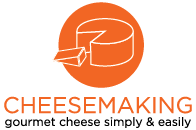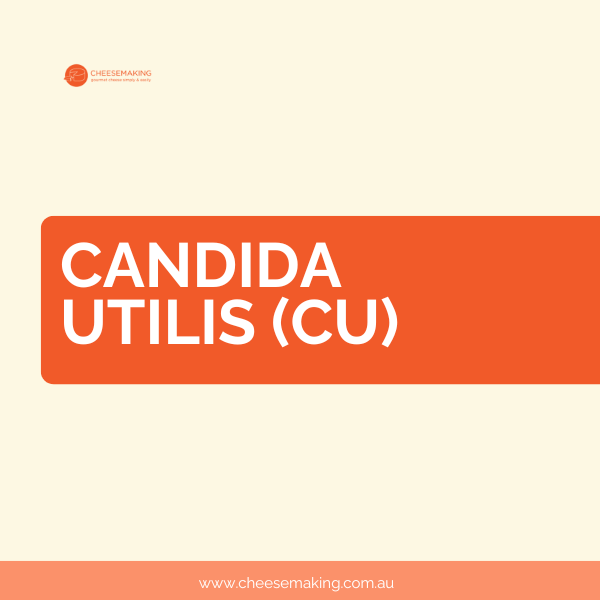Downloads
Technical name: Candida utilis
Usage: Direct addition to the milk of 2 doses per 1000 l milk
Dosage and pack size
· Large size (10 Doses) will inoculate from 3,000 to 10,000 litres of milk (foil sachet) $36 25g
· Small size (1.6 Doses) will inoculate up to 500 to 1,500 litres of milk (screw cap bottle) $16 20g.
Freeze Dried culture
Direct addition to the milk of 2 doses per 1000 litres of milk
Add ¼ to ½ drop spoon to 8 litres of milk depending on the level of flavour development required. An increased dosage rate will generate increased flavour development.
Benefits of using Candida Utilis
- CU 77 is used to develop flavour on the interior (the paste) of the cheese
- Aroma developed: sweet floral, fruity (pear, banana) with a small alcohol flavour
- It is the best de-acidifier of all of the yeasts. Reduces bitterness, plus allows ripening cultures such as white mould and washed rind bacteria to grow better and faster
- CU grows fast in the paste of the cheese and only moderately on the surface. Therefore, it must be added to the milk and is never sprayed on the cheese.
- It works harmoniously with SX to produce earthy/farmyard and fruity flavours without any sharp dominating notes.
- CU can be used independently or in conjunction with white mould, Geotrichum, blue moulds and all Aroma and Ripening Cultures for a more complex flavour profile.
- CU is not as acid tolerant as KL and DH; the optimum pH for growth is 5.5, but of those three yeasts, it is the best de-acidifier. It does ferment only glucose.
- Aroma developed: sweet floral, fruity (pear, banana). One of the molecules produced is phenyl ethanol which has a sweet floral aroma (rose, carnation) but also some antimicrobial properties.
- Enzymatic activity: caseolytic (texture softening) weak activity, aminopeptidase (flavour from protein breakdown) moderate, lipolytic (flavour from fat breakdown) weak to nil.
Used in conjunction with:
- Other yeasts: more complex flavour profile and better de-acidification when used in conjunction with KL or DH
- Penicillium candidum
- Penicillium roqueforti
- Corynebacteria (Brevibacterium linens, Arthrobacter nicotianae)
- SX
Types of cheeses used:
- Farmstead cream cheeses(contributes to the flavour but does not form a rind)
- Soft bloomy cheeses
- Washed rinds (all types: soft, pressed uncooked, pressed cooked)
- Blue cheeses (soft and semi hard)
- Milled curd
- Pressed curd
- Washed curd
| Strain | KL | CU | DH |
| Species | Kluyveromyces lactis | Candida utilis | Debaromyces hansenii |
| Fermentation: | |||
| Glucose | + | + | – |
| Lactose | + | – | – |
| pH neutralisation | + | +++ | ++ |
| Aroma development | +++ | ++ | + |
| Growth: | |||
| Surface | +++ | +++ | +++ |
| Cheese Matrix | +++ | +++ | + |
| Temperature: | |||
| Optimum | 30⁰C | 21-30⁰C | 25⁰C |
| Growth 12⁰C | slight | slight | slow |
| Growth 4⁰C | none | none | none |
| pH optimum: | 4.5 | 5.5 | 5.8 |
| NaCl: | |||
| Optimum | 2% | 1 – 4% | 1 – 4% |
| Growth 4% | ++ | ++ | +++ |

